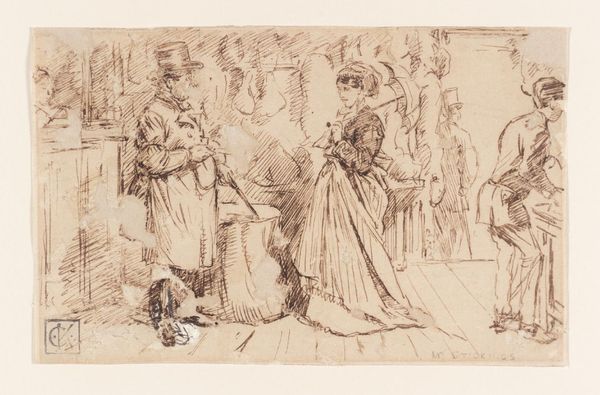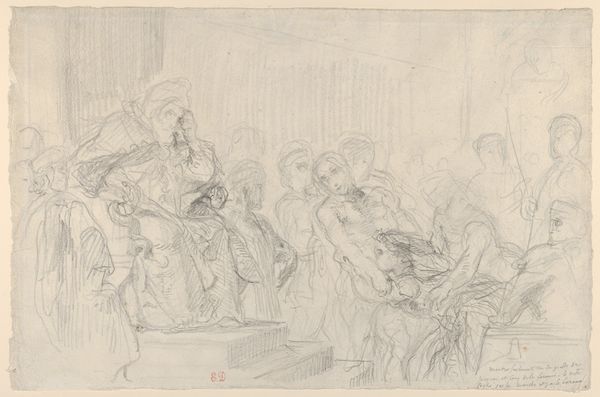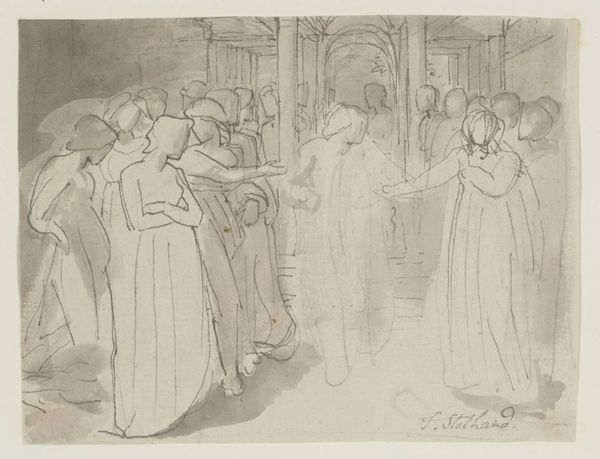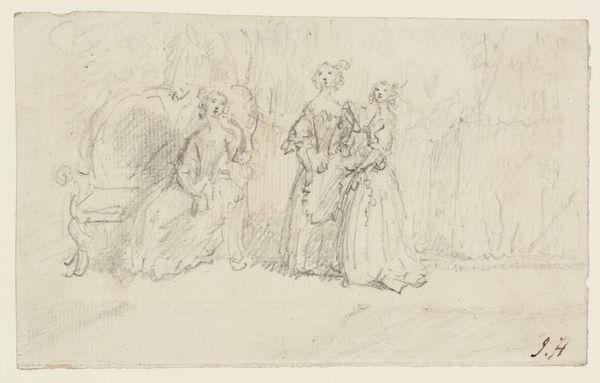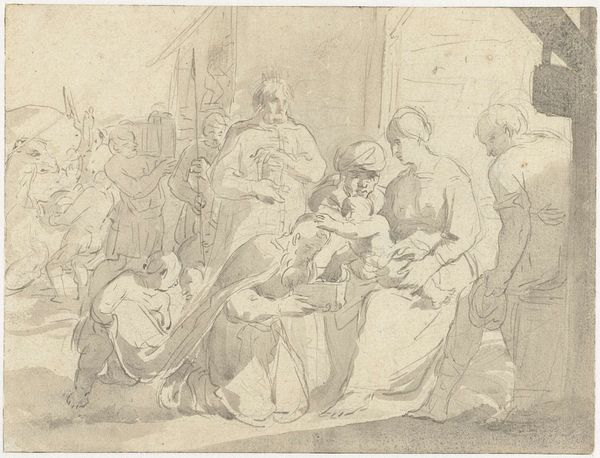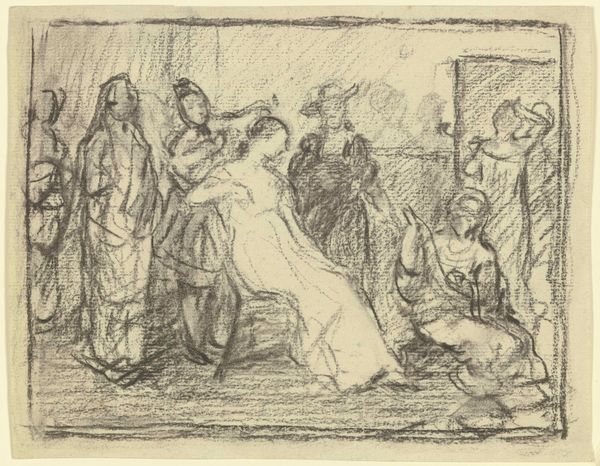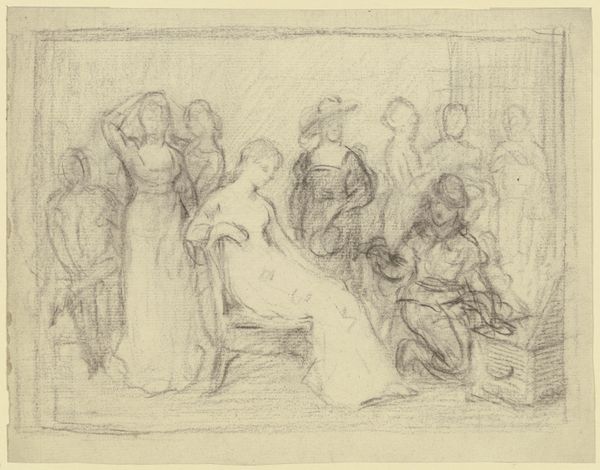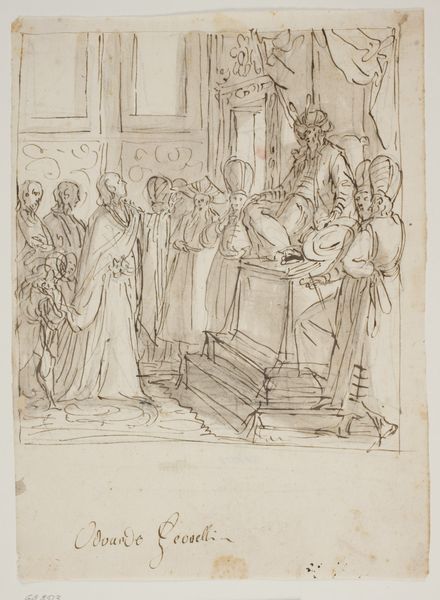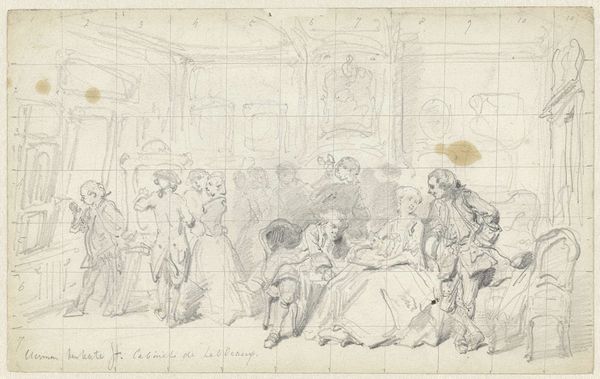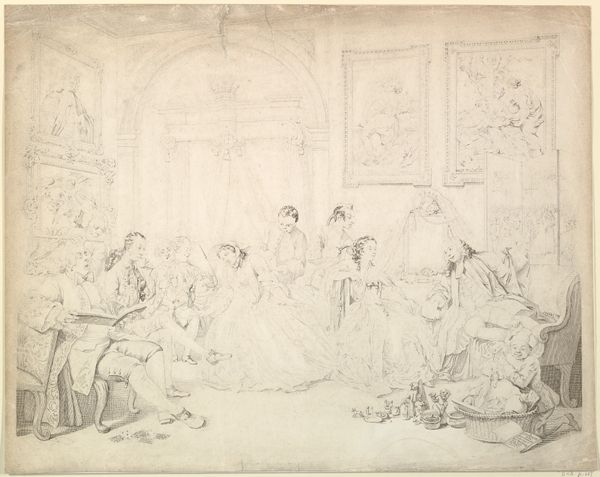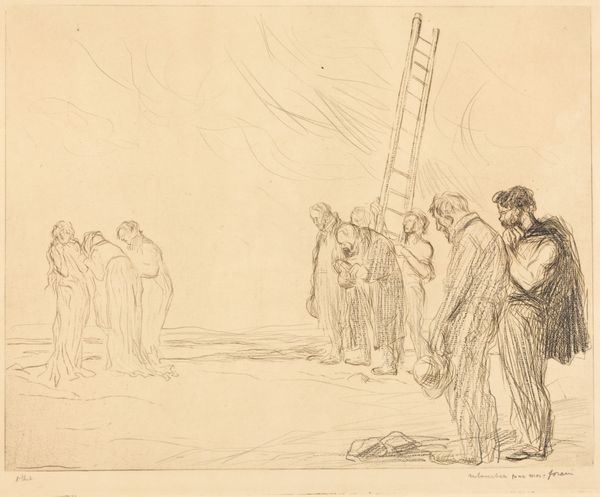
Dimensions: height 178 mm, width 370 mm
Copyright: Rijks Museum: Open Domain
Editor: This drawing by Jean Emile Laboureur, titled "Straattafereel bij het uitgaan van een theater te Londen" seems to capture a very specific moment. It’s created using ink and pencil and looks quite spontaneous. What do you see when you look at it? Curator: I’m immediately drawn to the material process and its context. This isn’t a grand oil painting; it's a drawing, likely a preparatory sketch, perhaps even something intended for reproduction in a newspaper. That act of dissemination changes the value equation considerably, doesn’t it? Editor: It does. So, the medium itself suggests something about its purpose? Curator: Exactly. Consider the immediacy of pencil and ink – readily available materials suitable for capturing a fleeting scene. This aligns with the rise of mass media and the increasing desire to document everyday life in the late 19th and early 20th centuries. Think about who made these materials. Where they sourced? How the drawing gets reproduced… Editor: So you are thinking about art beyond the gallery wall. I see the street scene itself as maybe also commenting on consumer culture... with people flooding out of the theater… almost being 'consumed' into public space? Curator: Precisely! The 'theater exit' transforms the experience itself into another consumable spectacle within the city’s material landscape. Who has access to it? Where is everyone going afterwards? It’s a complex intersection of labor, leisure, and class etched into this single sheet of paper. Editor: That’s fascinating. I’m seeing this drawing in a completely new light. Thank you! Curator: And I, similarly, have seen it in a different manner through this exercise, emphasizing its materiality as an object itself, tied so intrinsically with labor and capitalism.
Comments
No comments
Be the first to comment and join the conversation on the ultimate creative platform.
